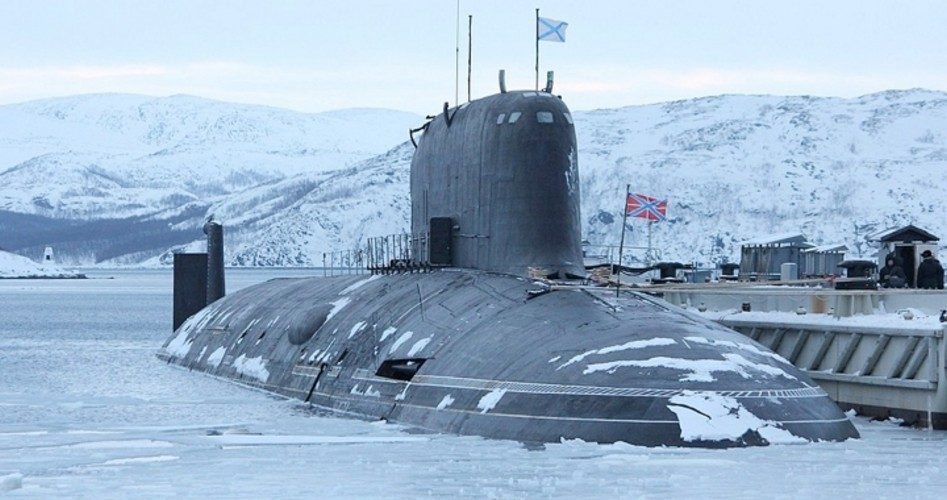
Admiral James Foggo, the commander of U.S. Naval Forces Europe, who is also the commander of NATO’s Allied Joint Force Command-Naples, told reporters at the Pentagon on October 5 that Russia is investing heavily in its submarine fleet and wants to build an “asymmetric” threat to U.S. and NATO forces.
“Russia is not 10 feet tall but they do have assets that keep me vigilant, concerned. One of them is in the undersea domain,” Foggo said. “Russians have produced the new Dolgorukiy-class submarine. They’ve produced the Severodvinsk-class submarine. They’ve produced the new Kilo hybrid-class submarines.”
Earlier in the day, while addressing the Atlantic Council in Washington, Foggo spoke of his concerns in a statement quoted by CNN.
“We’ve seen creation of new classes of all sorts of submarines and ships. I’m more concerned with submarine warfare,” he stated.
Agence France Presse cited Foggo’s statement that the Russians currently have six Kilo-class diesel-electric attack submarines in the Black Sea and eastern Mediterranean.
In the second edition of the podcast “On the Horizon: Navigating the European and African Theaters,” on September 30, Foggo discussed the Harry S. Truman Carrier Strike Group’s return to Europe. He spoke of how the United States and NATO are addressing challenges in the North Atlantic, North Sea, and Arctic.
When asked to provide an example of the growth of Russia’s submarine capabilities, Foggo cited their missiles, which have recently been upgraded to provide land-attack capability.
“The Kalibr class cruise missile, for example, has been launched from coastal-defense systems, long-range aircraft, and submarines off the coast of Syria,” Foggo said during the latest edition of “On the Horizon.”
“They’ve shown the capability to be able to reach pretty much all the capitals in Europe from any of the bodies of water that surround Europe,” he added.
Despite the increased capability of the Russian sea-based missiles, the manner in which they have been used in the past may provide justification for optimism, rather than alarm. In October 2015, Russian warships in the Caspian Sea fired 26 Kalibr missiles at ISIS targets in Syria. And the submarine Veliky Novgorod fired three Kalibrs from the eastern Mediterranean at ISIS targets in eastern Syria that same month.
Since ISIS has been identified as a terrorist group our nation supposedly wants to destroy, perhaps we should thank the Russians for doing our job for us.
Photo of K-560 Severodvinsk: mil.ru
Related article:
Russia-NATO Chess Match: Russia Building Up Military Sites Near Polish Border

